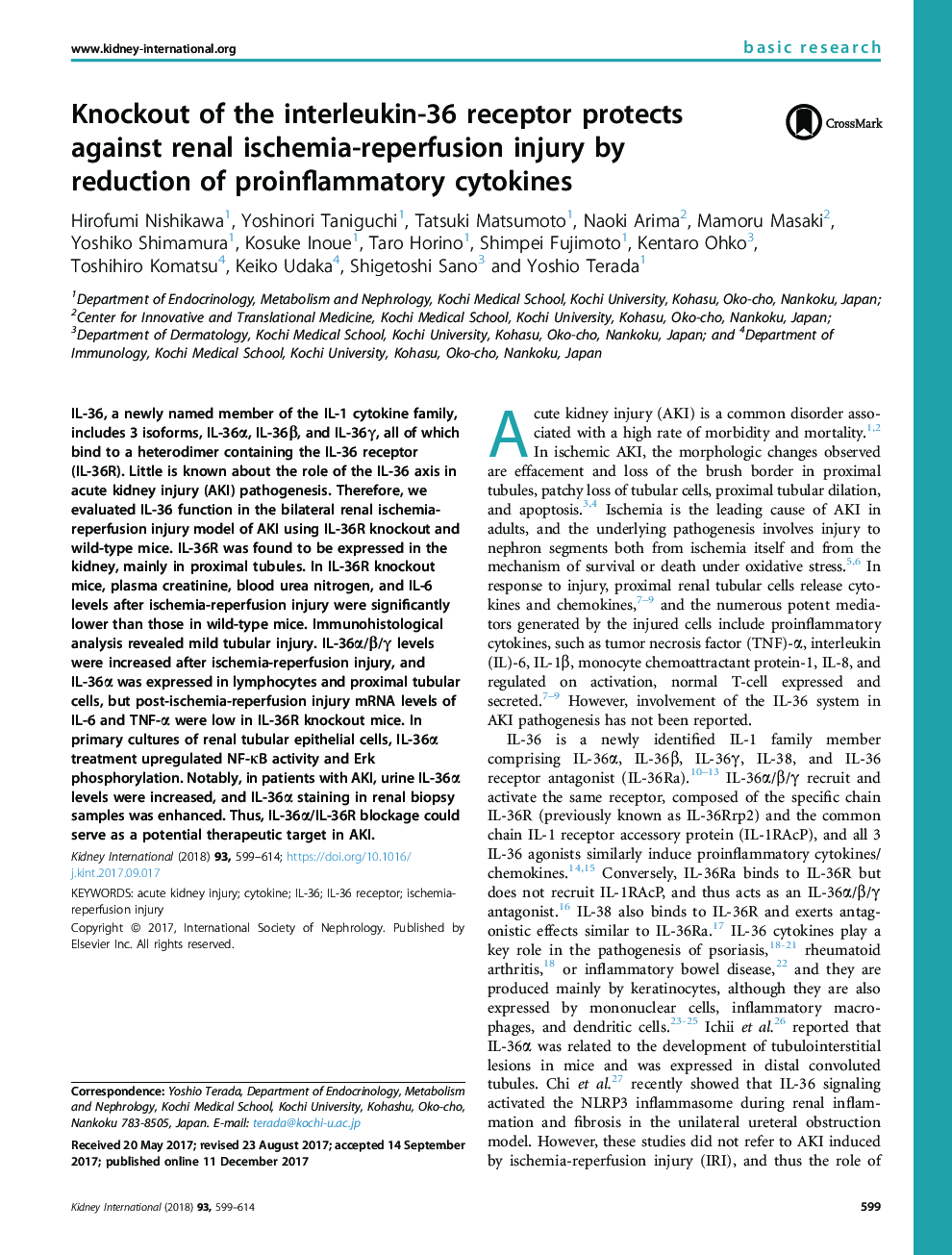| Article ID | Journal | Published Year | Pages | File Type |
|---|---|---|---|---|
| 8772861 | Kidney International | 2018 | 16 Pages |
Abstract
IL-36, a newly named member of the IL-1 cytokine family, includes 3 isoforms, IL-36α, IL-36β, and IL-36γ, all of which bind to a heterodimer containing the IL-36 receptor (IL-36R). Little is known about the role of the IL-36 axis in acute kidney injury (AKI) pathogenesis. Therefore, we evaluated IL-36 function in the bilateral renal ischemia-reperfusion injury model of AKI using IL-36R knockout and wild-type mice. IL-36R was found to be expressed in the kidney, mainly in proximal tubules. In IL-36R knockout mice, plasma creatinine, blood urea nitrogen, and IL-6 levels after ischemia-reperfusion injury were significantly lower than those in wild-type mice. Immunohistological analysis revealed mild tubular injury. IL-36α/β/γ levels were increased after ischemia-reperfusion injury, and IL-36α was expressed in lymphocytes and proximal tubular cells, but post-ischemia-reperfusion injury mRNA levels of IL-6 and TNF-α were low in IL-36R knockout mice. In primary cultures of renal tubular epithelial cells, IL-36α treatment upregulated NF-κB activity and Erk phosphorylation. Notably, in patients with AKI, urine IL-36α levels were increased, and IL-36α staining in renal biopsy samples was enhanced. Thus, IL-36α/IL-36R blockage could serve as a potential therapeutic target in AKI.
Related Topics
Health Sciences
Medicine and Dentistry
Nephrology
Authors
Hirofumi Nishikawa, Yoshinori Taniguchi, Tatsuki Matsumoto, Naoki Arima, Mamoru Masaki, Yoshiko Shimamura, Kosuke Inoue, Taro Horino, Shimpei Fujimoto, Kentaro Ohko, Toshihiro Komatsu, Keiko Udaka, Shigetoshi Sano, Yoshio Terada,
